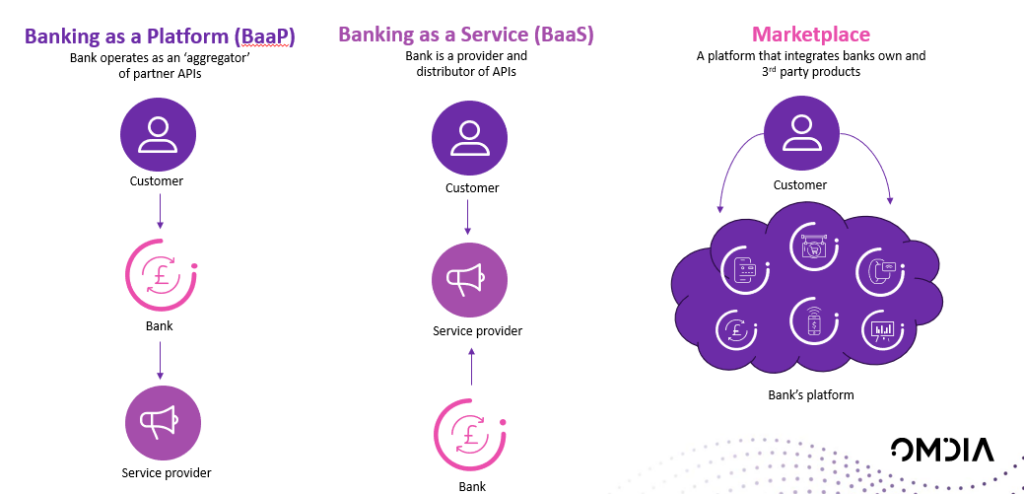State of play: banking
Each month, Philip Benton, Principal Fintech Analyst at Omdia, explores a new topic and assesses the “state of play”, providing an analysis and understanding of the market landscape.

It’s a tough time to be a bank
This month, Philip takes an in-depth look at banking.
I had the pleasure of attending FinovateEurope in London this week and participated in the ‘Analyst All Stars’ session, where I presented my seven-minute vision for “how banks can succeed in the brave new world of super-apps, marketplaces, ecosystems and platforms”.
Seven minutes wasn’t long enough to go into much detail, so I thought for this month’s column, I would take a little longer to flesh out my view of the current state of play in banking.
2023 was tough for banking, but 2024 hasn’t started any better
2023 was a brutal year for the banking industry. In fact, FinovateEurope 2023 occurred just a few days after the collapse of Silicon Valley Bank, and we didn’t know then that it would be the first of many banks to fail, including Signature Bank, First Republic Bank and the dramatic collapse of Credit Suisse.
According to the Financial Times, banks shed more than 60,000 jobs in 2023, making it one of the worst years for cuts since the financial crisis. But 2024 has started off in a similar vein, with Lloyds Bank, Virgin Money and TSB among several banks to already announce job cuts and branch closures.
Banks face a myriad of challenges, from transformative technological shifts in cloud technology, open banking and AI to increasing competition from neobanks, fintechs and Big Tech, and all while dealing with more frequent and stringent regulatory requirements. It’s a tough time to be a bank.
Neobanks aren’t a threat, until they are
There has been a lot of doom and gloom written around the future of neobanks, but it is easy to forget that they are only now just entering their teenage years and a handful have already matured into fully fledged adults.
Europe was the birthplace of neobanks, with the first players emerging in the UK and Germany, including Atom Bank, Monzo, N26, Revolut, and Starling Bank. 72% of the European neobanks tracked in Omdia’s Neobank Activity Tracker are start-ups, considerably higher than the global average of 56%.
There’s only been a few successful incumbents in Europe that have launched neobanks. Chase UK is the standout, with most focusing on improving the digital experience of their existing brand in response to the threat.
But neobanks are always the consumer’s second bank, right?
Not exactly.
Monzo recently announced that it had reached 9 million customers as of 2024. This makes it the seventh largest bank in the UK, and the neobank also achieved profitability last year.
Monzo has more than doubled its customer base in less than four years. In its 2023 annual report, its revenue grew 2.3x, card spend was up 38%, and deposits grew by 34% (£6 billion), which all indicate that users are increasingly using Monzo as their primary bank.
On top of this, just look at its ever-expanding product portfolio. Monzo has added business accounts, savings, credit cards, and investments to its arsenal. And Monzo isn’t the only one. Starling Bank, bunq, and Nubank are a number of other neobanks who all provide banking products just as impressive as any incumbent bank. In fact, Nubank is on course to become Latin America’s largest financial services provider and already boasts more than 90 million customers.
Legacy technology debt is the Achilles’ heel of incumbents
Although incumbent banks want to transition to the cloud, a combination of technical debt and regulatory restrictions (in certain regions) mean that globally banks are still heavily reliant on their on-premises infrastructure and on-premises applications.
According to Omdia’s Retail Banking Survey, more than 64% of banks’ global technology budget is spent on maintaining existing legacy technology and just 36% is allocated to either growing or transforming their technology. In the same survey, banks indicated they are most worried about ‘customer management’, with 45% listing it as one of their top three business concerns.
Many of these existing banking systems, particularly at the back end, are run on antedated technology, but due to its importance, it is challenging to move away from this tech quickly, and migrations have to be carried out using a phased approach. Several incumbent banks have chosen to modernise their front-end infrastructure first, which is more achievable, to improve the user experience and give the impression of real-time changes, when in fact it isn’t any quicker in the back end.
However, there is a desire among banks to invest in core banking infrastructure, with 38% of respondents indicating that the leading factor in their decision to upgrade their core banking system is to ‘create a consolidated customer view’.
European banks are embracing the opportunity of open banking
Since its inception, open banking has been driving a broader shift towards customer (open) interfaces and digital ecosystem collaborations (largely through partnerships), which means the value chains and business models are changing. According to Omdia’s Retail Banking Survey, 68% of European retail banks plan to leverage open APIs to improve their own propositions, which is considerably higher than the global average of 48%.

Source: Omdia
Open banking can be embraced in a multitude of ways. The above image showcases the three main models. However, I want to focus most on the ‘marketplace’ concept.
The marketplace approach is where the data platform is used to provide a comparison mechanism for consumers, allowing them to evaluate multiple tailored products at the same time from providers across the financial services industry without having to manually input details every time. A bank can provide a platform to integrate its own products and those from third parties. A few banks have already tried this with some success, including DBS Bank in Singapore.
I think the marketplace approach could be a really powerful one. It helps banks maintain their relevance while providing the consumer with a curated and personalised set of financial services.
Open banking might be the catalyst to the success of ‘super-apps’ in Europe
One of the reasons super-apps haven’t worked in Europe is they restrict choice. However, marketplaces that are enabled through open banking provide consumers with ease of access and (some) choice.
The Starling Marketplace is a great example, where Starling Bank has pre-selected and vetted a range of third-party providers like Direct Line, Habito, and Wealthify and uses open banking technology to connect and streamline the onboarding process all through the Starling Bank app.
Banks have an advantage in that they are all regulated entities who are still (on the whole) trusted to manage money.
I think banks need to focus on what they are good at, be it deposits, savings, or mortgages, and partner with third parties to provide more choice to the consumer while maintaining this relationship.
My vision of super-apps in Europe is that they are powered by open banking to make a marketplace of choice, but banks continue to play a significant role.
About the author
 Philip Benton is a Principal Fintech Analyst at Omdia and writes analysis on the issues driving technological change in financial services. Prior to Omdia, he led consumer trends research in retail and payments at strategic market research firm Euromonitor.
Philip Benton is a Principal Fintech Analyst at Omdia and writes analysis on the issues driving technological change in financial services. Prior to Omdia, he led consumer trends research in retail and payments at strategic market research firm Euromonitor.
In this column, Philip will discuss the technological implications and consumer expectations of the latest fintech trends.
You can find more of Philip’s views on fintech via LinkedIn or follow him on X @bentonfintech.










































